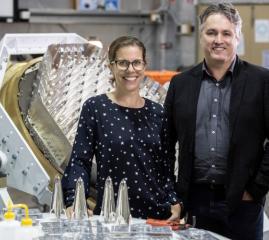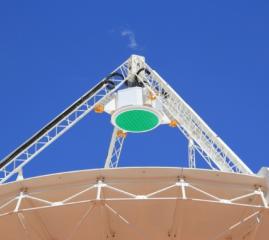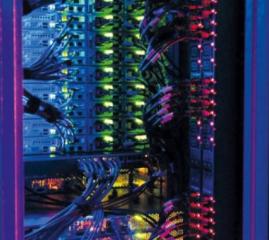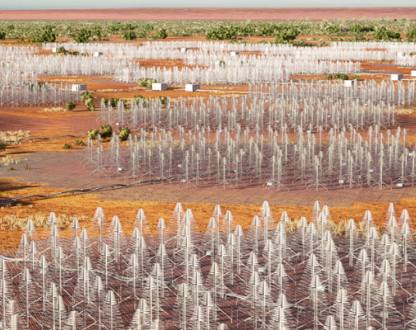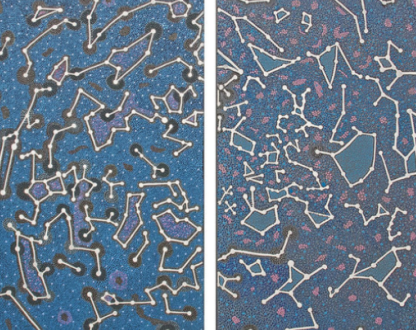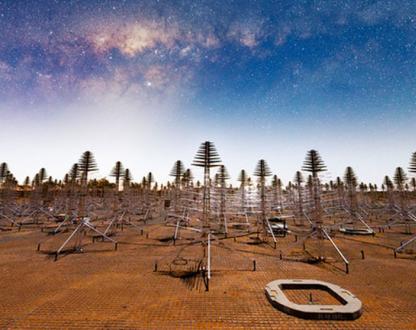The SKA telescopes will drive worldwide technological developments during their lifetime of more than 50 years.
The Square Kilometre Array, or SKA will be the largest and most sensitive radio telescope on Earth.
Two complementary radio telescopes, located in Western Australia and South Africa, will use different types of antennas to ‘tune in’ radio frequencies
Low frequency radio waves will be received in Australia by more than 131,000 Christmas tree-like antennas, stretching over the horizon
Mid frequency radio waves will be received in South Africa by around 200 dishes
Radio emissions from the furthest reaches of space, reach Earth…and are detected by the SKA telescopes.
These are converted to digital signals and sent through fibre optic cables to supercomputers for processing into images and information for researchers.
The amount of raw data coming from the telescopes will be amazing – nearly 1 Terabyte per second – that’s like downloading 10 ultra-high definition films, every second.
This data will help answer some big questions:
Why is the expansion of the universe accelerating?
Does Einstein’s theory of general relativity hold up everywhere in the universe - especially places with extreme gravitational fields?
What did the universe look like billions of years ago when the first galaxies formed?
Is there life elsewhere in the universe?
But the most exciting part about the SKA telescope? It will answer questions we haven’t even thought of yet!
To find out more about the SKA, its purpose, and who is helping bring this massive science project to life, visit www.ska.gov.au
Locations and construction
Australia will host SKA-Low, which will have 131,072 antennas receiving low-frequency radio waves. Each antenna will be 2 metres tall and shaped like a Christmas tree. SKA-Low will be constructed at Inyarrimanha Ilgari Bundara, the CSIRO Murchison Radio-astronomy Observatory in Western Australia.
South Africa will host SKA-Mid, which will be made up of 197 dish antennas receiving mid-frequency radio waves.
The Australian SKA site is:
- in remote Western Australia, around 800 km north of Perth
- part of the ancestral lands of the Wajarri Yamaji
- in the Australian Radio Quiet Zone WA to protect the telescope from radio interference from electronic devices.
Construction on the SKA telescopes has started and is expected to finish by 2028.
Indigenous land use agreement
The Wajarri Yamaji played an important role in enabling Australia to host an SKA telescope. The indigenous land use agreement for the site allows construction and ensures the Wajarri Yamaji will benefit through community development, infrastructure, training and education.
Collaborating on the global project
Sixteen countries currently participate in the SKA project. These are:
- Australia
- Canada
- China
- France
- Germany
- India
- Italy
- Japan
- the Netherlands
- Portugal
- South Africa
- South Korea
- Spain
- Sweden
- Switzerland
- the United Kingdom.
The Australian SKA Office coordinates Australia’s involvement in the project.
Designing the telescopes
Over 1,000 engineers and scientists in 20 countries have been involved in the design.
This includes building SKA precursor telescopes to develop and test new technologies:
- CSIRO operates the ASKAP radio telescope.
- Curtin University leads an international collaboration of universities and research institutions that operate the Murchison Widefield Array.
These powerful telescopes are already performing cutting-edge scientific work and making significant discoveries.
Opportunities for Australian businesses
Australian businesses will construct and develop new technologies for the SKA telescopes. This will expose Australian businesses to new skills and capabilities, making them more competitive.
Case studies from Australian companies
Australian companies helped design the SKA telescopes and build the precursors. They’ve also found new uses for technology developed for the SKA project.
Advancing scientific discovery
The SKA aims to answer some of the biggest questions in astronomy. Its unparalleled sensitivity, resolution and scanning speed will enable scientific discoveries in important areas:
- Galaxy evolution, cosmology and dark energy – why is the universe expanding?
- Gravity in pulsars and black holes – does Einstein's general relativity hold in the most extreme areas of the universe?
- The cosmic dawn – what did the young universe look like?
- Life beyond earth – if life is out there, what does it look like?
Read more about the SKA project's science goals on the SKAO website.
Developing new technologies
Radio astronomy led to the development of new technologies. These technologies are used in important fields such as computer science, medical imaging and advanced manufacturing. The SKA project is also expected to create technologies with broad applications.
Astronomers will analyse SKA data to achieve the project’s science goals. Processing the unprecedented flow of data from the telescopes will require more supercomputing power than today’s best technology. The Pawsey Supercomputing Centre in Western Australia will house a new supercomputing facility.
Read about SKA technology on the SKAO website.
Investing in science infrastructure
Government investment in next-generation science infrastructure ensures Australia will keep making world-class discoveries and collaborating on major international science projects.
Australia is contributing 14% of the total cost of construction and operations.

